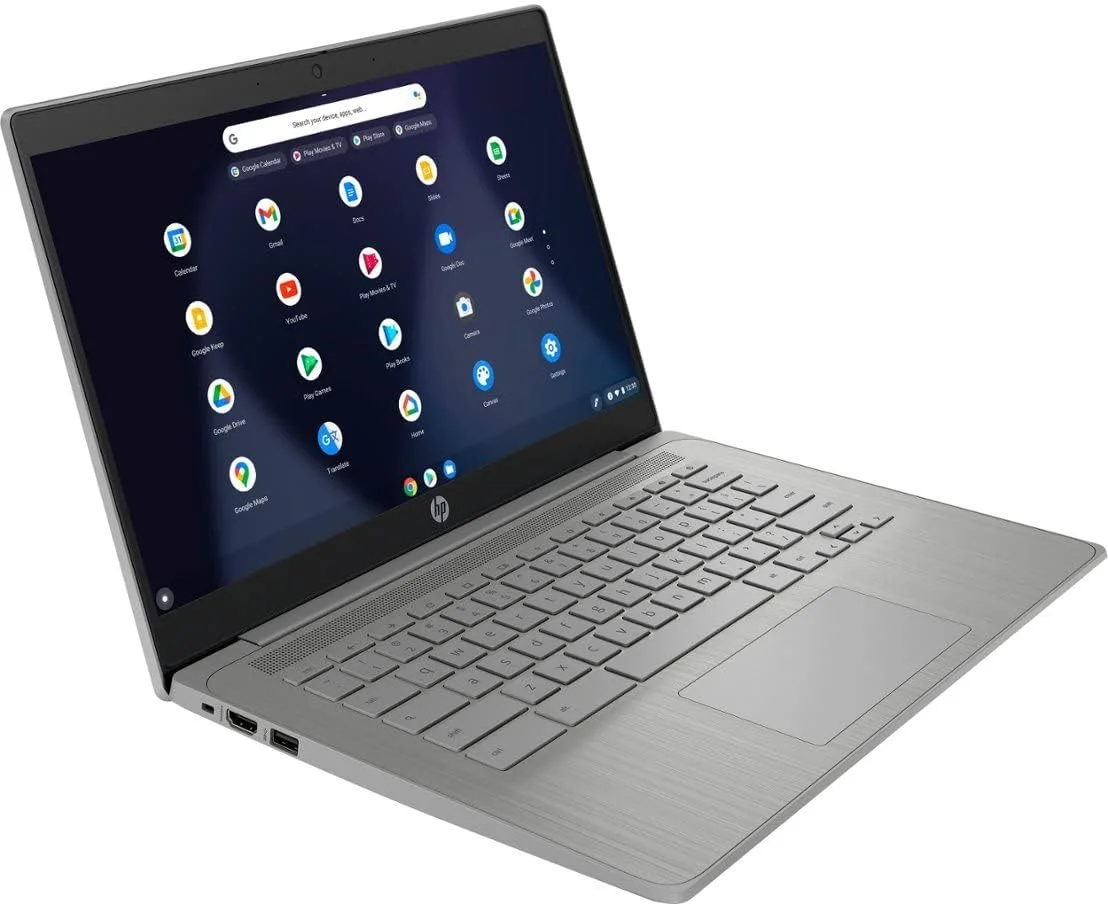Introduction
Working on your laptop for extended periods makes you highly aware of the value of additional screen space. Remote workers gamers designers and students who use a laptop benefit from external monitors which enhance both their productivity and entertainment capabilities and gaming performance.
When multiple options exist which one should you choose? The following article presents a detailed analysis of the 7 most outstanding external laptop monitors by comparing their advantages and disadvantages to assist readers in their decision process. The guide explores external monitor connectivity for laptops and compares extenders to full-sized displays plus evaluates the investment value of portable computer screens. Let’s dive in!
How to Choose External Monitor for Laptop?
Monitors come in different sizes and are not equal. Before buying an external monitor, here are the most important factors to consider:
Key Factors to Consider
1. Screen Size and Resolution
- A 24-27 inch display fits the needs of the average user.
- A screen resolution of 1080p fits general use but creative professionals and gamers need 4K to meet their needs.
2. Refresh Rate and Response Time
- The combination of 120Hz or 144Hz refresh rates produces the best performance for gaming alongside smooth scrolling experiences.
- Hour-long endurance waits (1ms-5ms) result in decreased lag times with eliminated ghosting effects between graphic outputs.
3. Connectivity Options
- Pay attention to which ports the monitor incorporates because it must establish the connection through either HDMI, DisplayPort, USB-C or VGA to function properly with your laptop.
- Some high-end monitors offer a Thunderbolt interface for achieving better performance.
4. Portability and Weight
- The quest for mobile workspace needs people to purchase portable monitors for laptops which both weigh little and offer portability convenience.
5. Adjustable Stand and Mounting Options
- Ergonomic comfort requires that you choose a monitor that allows height adjustments and offers swivel and tilt features.
- VESA mount compatibility becomes valuable when you want to mount it on a stand.
6. Color Accuracy and Display Technology
- The IPS panel technology delivers a bright color spectrum and excellent viewing range serving design professionals best.
- TN panels are better for gaming users due to their faster response times.
How to Use External Monitor for Laptop?
Linking the Display to Your Computer System
- HDMI & DisplayPort: This delivery approach provides a basic solution with straightforward setup requirements.
- USB-C & Thunderbolt: Ideal for newer laptops with USB-C ports.
- Wireless Display: Some monitors offer the possibility to share your display using Wi-Fi.
Configuring Display Settings
- Access Display Settings through Windows or reach System Preferences then select Displays on macOS.
- Select either “Extend Display” to extend your laptop screen for multitasking or “Duplicate Display” to show an identical laptop screen duplicate display.
- To ensure the best experience adjust the display’s resolution level along with settings for brightness and scaling parameters.
Best External Monitors for Laptops – Our Top Picks
1. Dell UltraSharp U2723QE
✅ Pros:
✔ 4K resolution with 100% sRGB for color accuracy
✔ USB-C connectivity
✔ Adjustable ergonomic stand
❌ Cons:
✖ Expensive
✖ Lack of fast and high refresh rate that gamers need
💡 Best for: Professionals and creatives
2. ASUS ZenScreen MB16AC
✅ Pros:
✔ Lightweight and portable monitor for laptop users
✔ This monitor receives USB-C power directly from a connected system without needing an additional power source.
✔ Great for dual-screen productivity on the go
❌ Cons:
✖ Not the best for gaming
✖ Limited brightness
💡 Best for: Business travellers and remote workers
3. LG 27UK850-W
✅ Pros:
✔ 4K UHD resolution with HDR10 support
✔ USB-C and HDMI ports for versatility
✔ Excellent color accuracy for designers
❌ Cons:
✖ No built-in speakers
✖ Stand adjustability is limited
💡 Best for: Creative professionals, photo and video editors
4. BenQ EX3501R
✅ Pros:
✔ Ultra-wide 35-inch curved display for immersive viewing
✔ 100Hz refresh rate for smooth motion
✔ USB-C, HDMI, and DisplayPort connectivity
❌ Cons:
✖ Large size may not fit all desks
✖ Not ideal for portability
💡 Best for: Multitaskers who need extra screen space
5. Acer R240HY
✅ Pros:
✔ Affordable and great budget option
✔ Full HD 1080p display with vibrant colours
✔ Thin bezels for a sleek look
❌ Cons:
✖ No VESA mount compatibility
✖ No USB-C support
💡 Best for: Students and casual users looking for an affordable external monitor for a laptop
6. Lenovo ThinkVision M14
✅ Pros:
✔ Ultra-lightweight and compact (best for travel)
✔ USB-C powered (no extra cables needed)
✔ Adjustable stand for flexible positioning
❌ Cons:
✖ Small screen (14 inches) may not be suitable for everyone
✖ No built-in speakers
💡 Best for: Frequent travellers and business professionals
7. Gigabyte M32U
✅ Pros:
✔ 4K UHD resolution with 144Hz refresh rate (great for gaming)
✔ HDMI 2.1 support for next-gen gaming laptops
✔ Low input lag and fast response time
❌ Cons:
✖ Expensive compared to other monitors
✖ Requires a powerful laptop for full potential
💡 Best for: Gamers and high-performance users
Laptop Screen Extender vs. External Monitor – Which One to Choose?
What is a Laptop Screen Extender?
A laptop screen extender works as an attachable secondary display that extends screen capacity from your laptop without needing a bulky traditional monitor.
Differences Between a Screen Extender and an External Monitor
| Feature | Laptop Screen Extender | External Monitor |
|---|---|---|
| Portability | Very portable | Less portable |
| Screen Size | 12-15 inches | 24 inches and above |
| Power Source | USB-powered | Requires separate power |
| Ideal For | Travel & basic multitasking | Gaming, creative work, & office use |
Pros & Cons of a Laptop Screen Extender
✅ Pros:
✔The product offers both portability through its weight reduction and a streamlined carrying method.
✔ USB-powered, no extra cables
✔ Best for mobile workstations
❌ Cons:
✖ Limited screen size
✖ Not as powerful as a full-sized monitor
💡 Verdict: For portable screen extension consider getting a laptop screen extender. An external monitor for a laptop offers a better display experience than laptop screen extenders when viewing demands powerful display performance.
Portable Monitor for Laptop – Is It Worth It?
Benefits of a Portable Monitor for Laptop Users
- Ideal for travel & remote work.
- Plug-and-play setup with USB-C connectivity.
- A portable monitor boosts office productivity by giving users two screens for their work.
- These portable monitors bring better portability than larger external monitor options.
A portable monitor must have these essential features for purchase
- Screen size: 14-17 inches is ideal for portability
- Connectivity: Investigate products that deliver either USB-C or HDMI connection features.
- Resolution: Standards use 1080p resolution but you may find options with elevated screen definitions.
- Battery life: Select portable monitors feature internal batteries which provide added user convenience.
💡 Best Use Cases:
- User needs at least one additional monitor to support their business trips.
- Students who require an easily portable monitor to use with their laptop during study time.
- Professional video editors who work with mobile photo and video content.
Conclusion
The selection of an external laptop monitor depends on which requirements you wish to satisfy. For creative work with high-quality displays select between Dell UltraSharp U2723QE or LG 27UK850-W. The Gigabyte M32U becomes an attractive selection for gamers seeking screens. Need an ultra-portable option? Among portable monitor options, you should consider the ASUS ZenScreen MB16AC and the Lenovo ThinkVision M14.
Frequent travellers who use laptops will find essential benefits from either a laptop screen extender or portable monitor for laptop usage. Any additional monitor that you buy for your gear will boost your application work quality alongside enhancing your gaming settings and entertainment capabilities.
FAQs
Which external display will lead the market as the best choice for laptop users in 2025?
The best monitor for you depends on your particular requirements. The Dell UltraSharp U2723QE monitor offers exceptional value to professionals. Hobbyists need the Gigabyte M32U, and avid travelers need the ASUS ZenScreen MB16AC.
Does wireless technology permit laptop users to access external monitors?
Yes! Miracast and Chromecast and Apple AirPlay enable wireless display connections for certain monitors. The quality measures that HDMI and USB-C connections provide exceed those of wireless connections while also minimizing latency.
What are the benefits of using a laptop screen extender?
A laptop screen extender adds extra screen space without needing a full monitor. It’s lightweight, USB-powered, and portable, making it ideal for travellers and remote workers.
How do I set up a portable monitor for my laptop?
- Users can connect their monitor through USB-C and HDMI and DisplayPort interfaces.
- Open your Windows/macOS system Display Settings page.
- To enable dual-screen multitasking select “Extend Display” through the display settings menu.
- You should modify display brightness and size together with your screen resolution to achieve optimal usage.
Are external monitors compatible with all laptops?
Most modern laptops support external monitors, but you should check:
- Your laptop’s ports (HDMI, USB-C, DisplayPort)
- Your monitor resolution requirements depend on how many graphics processing units your laptop supports.
- Some monitors require one or more external power sources.






